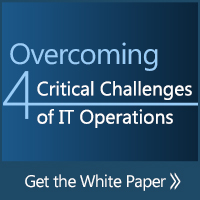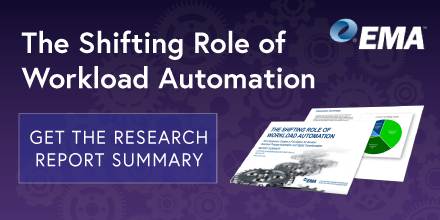Workload Automation: The Universal Remote for IT
Workload Automation serves as the universal remote for IT, pulling together disparate systems to give administrators a single point of control.

Growing Need for Workload Automation
Back in 1930, economist John Maynard Keynes predicted that the working week would be cut to 15 hours as technology advanced and living standards rose. But despite the technological innovation over the past 85 years, people are working longer hours and taking fewer vacations than ever before.
Similarly, despite the advances made in the computing industry, IT is more pressed for time than ever before. The sheer number of technologies, applications, and products that IT organizations must maintain and update has surged over the years. In fact, according to Gartner, most large organizations have more than three workload automation tools implemented in their environment.
As we said in a previous post on Gartner’s Approach to Automation in the Data Center, Gartner VP and Distinguished Analyst Ronni Colville stated the number may be even higher, with most organizations having more than eight tools, but not realizing it.
The number of different, yet overlapping technologies has created a situation similar to the clutter of remote controls many people have in their homes. Instead of moving forward faster with new and innovative technologies, IT is held back by a disjointed technology framework that is brittle and difficult to maintain.
The problem is that as the number of systems and technologies increases, the number of different remotes and scheduling tools increases as well. Just as people use universal remotes to reduce the clutter in their homes, workload automation can serve as the universal remote to give IT users’ one single point of control for the multiplicity of technologies in their IT Automation environment.
Workload Automation’s Many Uses
Each technology within today’s IT ecosystem typically has its own scheduling functionality, oftentimes requiring manual intervention and almost always only addressing the system it was specifically designed to control. For example, an IT department may utilize both Active Directory and Exchange to provision and de-provision users in the onboarding/off-boarding process. Even though these technologies work well in delivering the provisioning IT departments need, each one has its own separate scheduling tool that operates autonomously from the other.
Take an ETL tool like Informatica PowerCenter, which transforms data from one or more data sources into information for enterprises. Because PowerCenter is an application focused on its own specific requirements, the IT organization must rely on senior-level administrators and ETL architects to leverage the PMCMD command-line interface and scripting to integrate PowerCenter ETL processes with dependent process types. PMCMD’s limited capabilities do not account for things like triggering cross-workflow execution within PowerCenter or setting parameters at run-time dynamically.
Accounting for holidays in PowerCenter schedules also requires custom scripting a number of steps, resulting in an error-prone, costly, and time-consuming process. In order to achieve a reliable end-to-end data integration process enterprise-wide, automation is key. Automation allows users to integrate PowerCenter processes with dependent process types and other mission critical applications, forming heterogeneous workloads with advanced scheduling and workflow management capabilities to ensure reliable data quality and reduce manual intervention.
In addition to the scheduling silos that come with different technologies, IT organizations are also faced with increased complexity from today’s biggest challenges and trends —cloud, mobile, big data, and the Internet of Things. With all of the change being imposed on the IT organization, automation sits at the center to help drive these changes organization-wide.
The key is to find the right workload automation solution that meets your needs.









